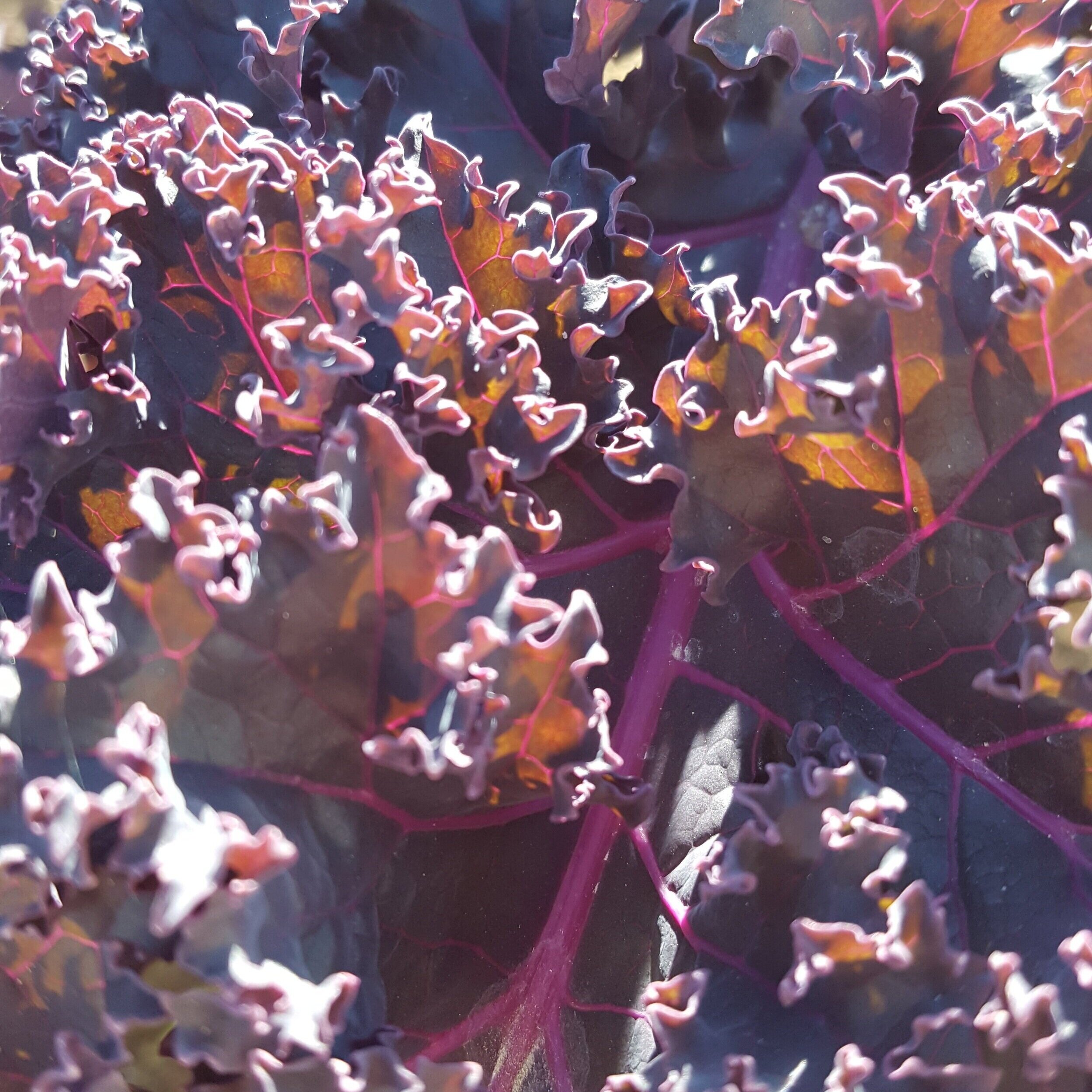Our Varieties:
Lacinato Kale: dark green and wrinkly oblong leaves. Sometimes called “dinosaur kale” because of the wrinkly texture of its leaves
Russian Variety Kale: Leaves that are frilly along the edges but that aren’t as curly as Vates or Red Bore. Purple/green color with purple stalks.
Red Bore Kale: A purple curly kale variety.
Vates: commonly known as “Curly kale.” The classic curly variety that you might find in the grocery store.
Kale plants after many, many harvests!
Harvest:
Harvest when kale has developed at least 3 or 4 leaves about the size of your hand.
Harvest by snapping or cutting off the outermost leaves of the plant. Harvest your way up the stalk leaving at least 4 leaves on top to continue photosynthesizing and producing.
You can continue to harvest kale throughout the season as it continues to produce more leaves.
End of the harvest:
Kale prefers the cool weather - we plant it in the Spring and Fall. When the weather begins to heat up kale will bolt, or flower, which turns the flavor bitter and the leaves tough. Fall Kale may survive into December, but will stop actively growing after consistent frost.
Storage and handling:
Bunches of kale wrapped in paper towels in a ziplock bag in the fridge will keep for a week or more.
Prepared kale (de-stemmed and chopped) will keep in a tupperware in the fridge for 3 or 4 days.
If leaves begin to wilt but otherwise smell and look fine, trim the stems and place them in a cup of water, like you would cut flowers, for a day.
Recipe ideas:
Try using kale in salads - use young, tender leaves and “massage” the kale leaves with lemon juice 10 to 15 minutes before compiling the rest of the salad. The acidity of the lemon juice and the “massage” breaks down the toughness of the raw kale leaves.
You can also cook kale down like you would spinach or collards to use in pastas, casseroles, or as a side.
For a quick, delicious, and healthy snack, consider making kale chips! Tear curly kale leaves into bite size pieces. Toss with olive oil and spices of choice (salt/pepper, a dash of hot pepper flakes, old bay, etc.) and bake at 350 for 10 minutes. Check frequently to ensure they don’t burn and remove from the oven when they are just barely turning gold and are getting crispy (they’ll continue to crisp up for a few minutes after being removed).





